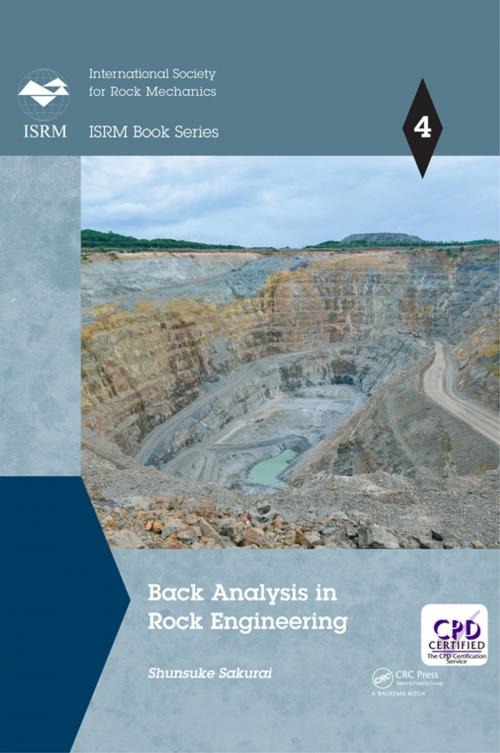| Author: | Shunsuke Sakurai | ISBN: | 9781315349541 |
| Publisher: | CRC Press | Publication: | September 1, 2017 |
| Imprint: | CRC Press | Language: | English |
| Author: | Shunsuke Sakurai |
| ISBN: | 9781315349541 |
| Publisher: | CRC Press |
| Publication: | September 1, 2017 |
| Imprint: | CRC Press |
| Language: | English |
This book provides practicing engineers working in the field of design, construction and monitoring of rock structures such as tunnels and slopes with technical information on how to design, how to excavate and how to monitor the structures during their construction. Based on the long-term engineering experiences of the author, field measurements together with back analyses are presented as the most powerful tools in rock engineering practice. One of the purposes of field measurements is to assess the stability of the rock structures during their construction. However, field measurement results are only numbers unless they are quantitatively interpreted, a process in which back analyses play an important role.
The author has developed both the concepts of “critical strain” and of the “anisotropic parameter” of rocks, which can make it possible not only to assess the stability of the structures during their construction, but also to verify the validity of design parameters by the back analysis of field measurement results during the constructions. Based on the back analysis results, the design parameters used at a design stage could be modified if necessary. This procedure is called an “Observational method”, a concept that is entirely different from that of other structures such as bridges and buildings. It is noted that in general, technical books written for practicing engineers mainly focus on empirical approaches which are based on engineers’ experiences. In this book, however, no empirical approaches will be described, instead, all the approaches are based on simple rock mechanics theory. This book is the first to describe an observational method in rock engineering practice, which implies that the potential readers of this book must be practicing engineers working on rock engineering projects.
This book provides practicing engineers working in the field of design, construction and monitoring of rock structures such as tunnels and slopes with technical information on how to design, how to excavate and how to monitor the structures during their construction. Based on the long-term engineering experiences of the author, field measurements together with back analyses are presented as the most powerful tools in rock engineering practice. One of the purposes of field measurements is to assess the stability of the rock structures during their construction. However, field measurement results are only numbers unless they are quantitatively interpreted, a process in which back analyses play an important role.
The author has developed both the concepts of “critical strain” and of the “anisotropic parameter” of rocks, which can make it possible not only to assess the stability of the structures during their construction, but also to verify the validity of design parameters by the back analysis of field measurement results during the constructions. Based on the back analysis results, the design parameters used at a design stage could be modified if necessary. This procedure is called an “Observational method”, a concept that is entirely different from that of other structures such as bridges and buildings. It is noted that in general, technical books written for practicing engineers mainly focus on empirical approaches which are based on engineers’ experiences. In this book, however, no empirical approaches will be described, instead, all the approaches are based on simple rock mechanics theory. This book is the first to describe an observational method in rock engineering practice, which implies that the potential readers of this book must be practicing engineers working on rock engineering projects.















